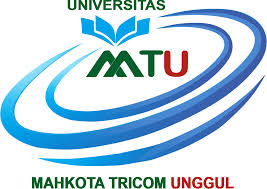Household Organic Waste Processing to Produce Eco Enzym at Kartosuro Christian Protestant Church (Gkpo), Sukoharjo, Central Java, Indonesia
DOI:
https://doi.org/10.55927/ajcs.v2i6.4631Keywords:
Eco Enzym, Organic Waste, ProcessingAbstract
In counseling in the form of community service for the Oikumene Protestant Christian Church (GKPO) Kartosuro which was carried out by a lecturer in the Environmental Engineering Study Program, Faculty of Engineering, Christian University of Technology Solo regarding the use of organic waste to produce eco enzymes, giving hope and benefits about utilizing good and sustainable organic waste. Processing organic waste from home also contributes to mothers in their respective households each to support the local government program of Sukoharjo Regency in controlling waste generation and producing eco enzyme products that directly benefit their respective families. The result of this community service activity is that PA GKPO Kartosura mothers received information on how to process organic waste into eco enzyme.
Downloads
References
Arifin, Leo Wibisono, et al. “Introduction of Eco-Enzyme to Support Organic Farming in Indonesia.” Asian Journal of Food and Agro-Industry, 2009, pp. 356–59, https://www.thaiscience.info/journals/Article/AFAI/10850243.pdf.
Banowati, Eva. “UNNES Green Community Development Through Waste Management.” Indonesian Journal of Conservation, vol. 1, no. 1, 2012, p. 12, https://journal.unnes.ac.id/nju/index.php/ijc/article/download/2060/2174.
Budiyanto, et al. “Turning Organic Waste Into Multifunctional Eco Enzymes: Innovation in Urban Areas.” DEDIKASI: Community Service Reports, vol. 4, no. 1, 2022, pp. 31–38, https://jurnal.uns.ac.id/dedikasi/article/download/55693/34476.
Dewi, Putu Ayu Vania Hapsari, and I. Wayan Sutama. “Processing Organic Waste Through the Eco Enzyme Concept for Households in Dalung Village During the Pandemic.” Empowerment, vol. 5, no. 1, 2022, pp. 93–100,https://journal.uniku.ac.id/index.php/empowerment/article/view/4590/3003.
Himma, Vina. “How To Make Eco-Enzyme?” Faculty of Public Health, Airlangga University, 2021, p. 2, https://fkm.unair.ac.id/ how-to-make-eco-enzyme-see-the-following-explanation /.
Kustiana, SP. “Utilization of Eco-Enzymes for Agriculture.” Ministry of Agriculture, 2022, p. 1, http://cybex.pertanian.go.id/mobile/artikel/99138/ Utilization of Eco-Enzymes for Agriculture /.
Maulitia, Ziyan Tirta, et al. “Pemanfaatan Sampah Organik Dan Anorganik Sebagai Salah Satu UpayaPengelolaan Sampah Di Desa Deles, Batang.” Jurnal Pusat Inovasi Masyarat, vol. 4, no. 4, 2022, p. 186, https://doi.org/https://doi.org/10.29244/jpim.4.2.51-59.
Nurfajriah, et al. “Training on Making Eco-Enzyme as an Organic Waste Processing Business at the Household Level.” JURNAL IKRAITH-ABDIMAS, vol. 4, no. 3, 2021, p. 195, https://journals.upi-yai.ac.id/index.php/IKRAITH-ABDIMAS/article/download/1535/1255/.
Prasetio, Viana Meilani, et al. “Benefits of Eco Enzyme in the Environment and Eco Enzyme Manufacturing Workshop.” Darmacitya, vol. 1, no. 1, 2021, p. 23,https://journal.unj.ac.id/unj/index.php/darmacitya/article/view/24071/11498.
Rasi, Nazaitulshila, et al. “Production And Characterization Of Eco Enzyme Produced From Tomatoand Orange Wastes And Its Influence On The Aquaculture Sludge.” International Journal of Civil Engineering and Technology (IJCIET), vol. 10, no. 3, 2019, pp. 967–80, https://iaeme.com/MasterAdmin/Journal_uploads/IJCIET.pdf
Ridwan, Ifayanti, et al. “Utilization of Inorganic Waste to Become Efficient Products.” Utilization of Inorganic Waste to Become Efficient Products, vol. 1, no. 2, 2016, p. 125, https://doi.org/https://doi.org/10.20956/jdp.v1i2.2196.
Sudaryantiningsih, Cicik. Modul Belajar Membuat Eco Enzyme. 2023.
Septiani, Ulfia, et al. “Eco Enzyme: Processing Household Waste Into Multipurpose Products at the Khazanah Virtue Foundation.” LPPM UMJ Community Service National Seminar, 2021, pp. 1–7, http://jurnal.umj.ac.id/index.php/semnaskat.
Tang, Fu E., and Chung W. Tong. “A Study of the Garbage Enzyme’s Effects in Domestic Wastewater.” World Academy of Science, Engineering and Technology International Journal of Environmental and Ecological Engineering, vol. 5, no. 12, 2011, pp. 887–92, https://publications.waset.org/6989/a-study-of-the-garbage-enzymes-effects-in-domestic-wastewater.
TOKPOHOZIN, ServaisDjromahouton, et al. “Use of Eco Enzymes in Tilapia Diets: Effects of Growth Performance Andcarcass Composition.” International Journal of Advanced Research in Biological Sciences, vol. 2, no. 11, 2015, pp. 143–54.
Team CNN. “7-Ways-To-Use-Eco-Enzyme-For-Skin-To-All-Purpose-Cleanser.” CNN Indonesia, 2022, p. 1, https://www.cnnindonesia.com/gaya-hidup/20221007110133-289-857540/7-Ways-To-Use-Eco-Enzyme-For-Skin-To-All-Purpose-Cleanser
Downloads
Published
How to Cite
Issue
Section
License
Copyright (c) 2023 Cicik Sudaryantiningsih, Yonathan Suryo Pambudi, Widianto, Agerippa Yanuranda Krismani, Richardus Indra Gunawan, Elvis Umbu Lolo

This work is licensed under a Creative Commons Attribution 4.0 International License.












.png)


















